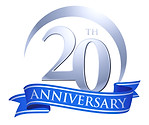
Project Data
Client: Fortune 500 Global Corporation specializing in Robotics, Power, Electrical Equipment & Automation Technology
Location: Northern Mississippi, USA
Timeframe: Two Months
Key Project Factors: People, process and system challenges had developed throughout the facility due to lack of KPI and departmental expectations; impacting labor performance and utilization throughout the distribution operations. Without studying the activities at the elemental level, constructing multi-variable engineered standards and identifying continuous improvement opportunities, the client would have been unable to address the inefficient process and facility layout challenges negatively impacting their throughput and performance.
The Challenge
Client was struggling to receive and store inbound product across multiple shifts due to inefficient process and layout constraints; driving increased processing time and hindering throughput. The existing process limited the operation from performing inbound functions in parallel (unloading, receiving and putting away simultaneously) and created productivity and labor utilization challenges between these upstream and downstream activities.
The Approach
CONTINUUM redesigned the inbound facility layout and modified unloading, receiving and put-away operational processes to achieve improved productivity and throughput required to handle multi-shift volume with a single shift team. Work steps and responsibilities were realigned between functions or improved to determine best practices and sorting activities were integrated into the unloading process to benefit travel reduction time in put-away functions.
The Results
The redesigned inbound operation allowed the receiving team to improve product flow through the operation while simultaneously reducing labor demands. This began by realizing a productivity improvement of 62% in the put-away operation after implementing engineered standards; alleviating the constraints for additional improvement through receiving and unloading. Aligning put-away locations with zones reduced traffic congestion and travel time per trip by directing operators to a defined footprint rather than necessitating multi-zone travel. Staffing in these operations was reduced by 44% as a result of the productivity increase as fewer resources were needed to complete the current inbound volume.

%20-%2011_2_2021%20(v1).jpg)
